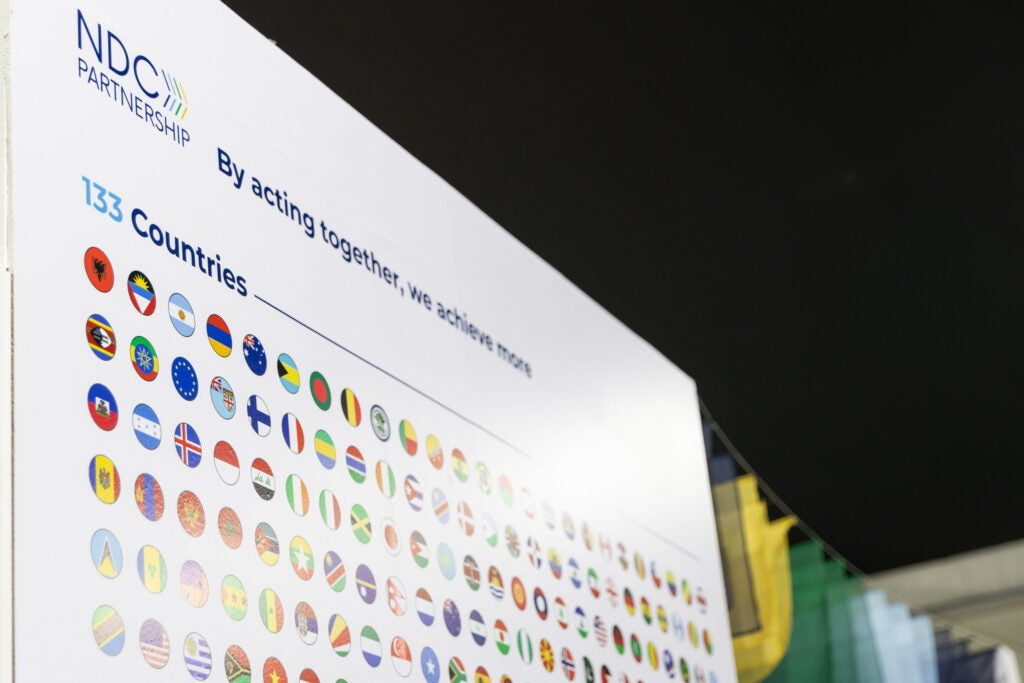By Juan Pablo Hoffmaister, Associate Vice President, Global Engagement and Partnerships, Environmental Defense Fund
The deadline for countries to submit their updated Nationally Determined Contributions has now passed. As researchers like Pauw and Klein (2020) have emphasized, while ambition in NDCs is crucial, the effectiveness of these commitments depends equally on their transparency, coherence, and ability to be implemented. Building on this research framework, we have a critical opportunity to reinforce what transformational NDCs should look like.
The strength of an NDC is not measured by a single emissions reduction percentage. As highlighted in the academic literature (Pauw et al., 2018; Weikmans et al., 2019), the real test lies in quality, policy alignment, and the ability to track progress.
Here are a few factors we’ll be tracking as more submissions come forward:
- More than numbers: the imperative for quality
The strength of an NDC is not measured by a single emissions reduction percentage. The real test lies in quality, policy alignment, and the ability to track progress. That means linking NDCs to Biennial Transparency Reports, National Adaptation Plans, and national development strategies. Countries must put forward commitments that are clear, measurable, and built on a foundation of accountability.Quality NDCs also need to offer greater ambition across all greenhouse gases and sectors. Methane reductions, in particular, present a major opportunity to curb emissions quickly and cost-effectively while also delivering economic and public health benefits. Moreover, countries have made commitments in recent years to better integrate targets for oceans, food and agriculture, and health into their NDCs. These issues, alongside emerging challenges like the increasing frequency and intensity of wildfires, highlight the need for comprehensive, forward-thinking climate strategies that integrate both mitigation and resilience efforts.
- Feasibility must accompany ambition
Ambition remains paramount, but without credible implementation strategies, even the boldest targets risk becoming empty promises. This year must be about closing the gap between pledges and real-world policies, ensuring that national spending plans align with climate goals and that private and public finance is mobilized accordingly. Beyond near-term targets, NDCs must be structured with long-term transformation in mind. This means establishing mechanisms for regular updates and course corrections, as well as integrating long-term strategies into national planning. Without this alignment, we risk setting targets that look good on paper but fail to materialize in practice. - Climate commitments and sustainable development should go hand in hand
Every country has a role to play, but not every country carries the same responsibility or capacity. High-quality NDCs reflect differentiated responsibilities while ensuring that all contributions are meaningful and contribute to global progress. For many emerging economies, sustainable development priorities such as poverty alleviation, food security, energy access, and resilience must be woven into climate strategies to reinforce, rather than hinder, national growth. Whether through sectoral approaches, just transitions, or intensity-based targets, countries should have the flexibility to pursue pathways that make sense within their own development contexts and national priorities. - Finance is key to making these plans a reality, but inequities must be addressed
No NDC is viable without a credible financing plan. Yet for many developing countries, unfavorable financing terms, access challenges, and high costs of capital create barriers that blunt their ability to implement ambitious climate commitments. National governments must integrate climate commitments into broader economic planning, but they cannot do so effectively if financial flows remain skewed in favor of those with the lowest risk profiles. Strong NDCs require identifying funding sources, as well as reforming the underlying financial mechanisms to ensure resources are effectively channeled toward implementation, and that concessional finance reaches those who need it most. Without addressing these systemic inequities, ambition will remain just that – ambition.
As UNFCCC Executive Secretary Simon Stiell recently emphasized, taking the time to submit quality NDCs will truly land their targets.
There is still time to get this right. Countries must use this year to refine their submissions, ensuring that ambition is matched with a roadmap for the delivery of real, lasting climate progress.










